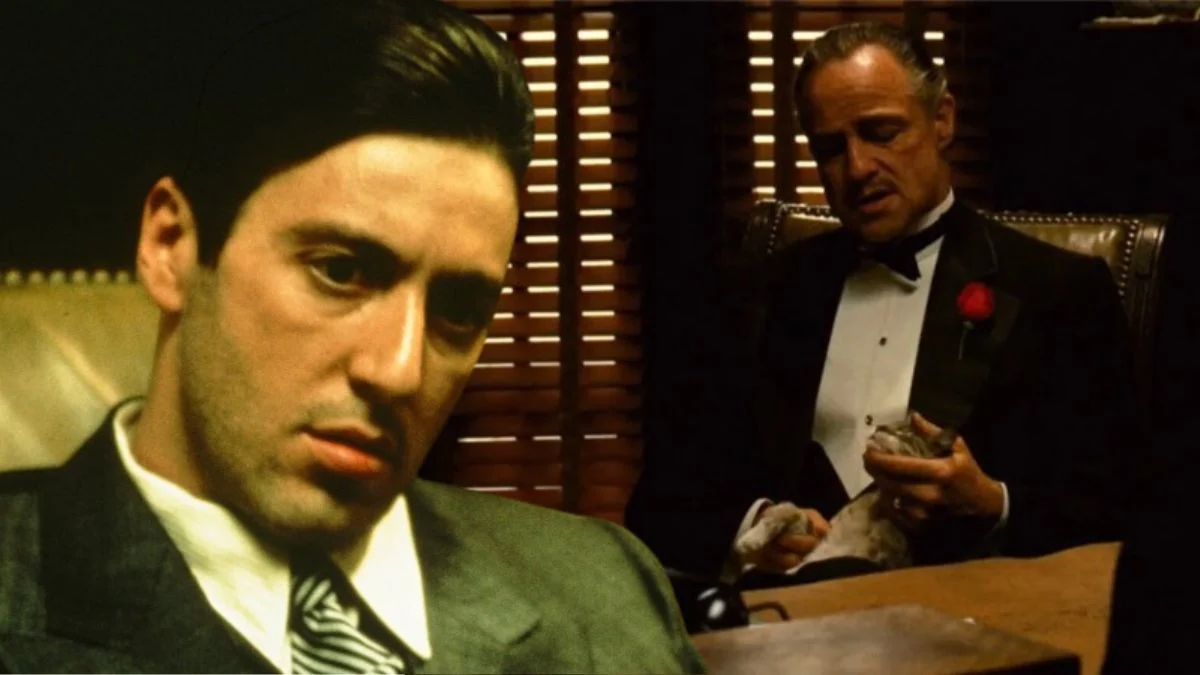
People continue to discuss ‘The Godfather’ for good reason, even decades later. While the story itself is a landmark achievement in film, the making of the movie is equally fascinating. The production was remarkably swift, overcame challenges with creative solutions, and contains subtle details that are worth discovering upon closer inspection.
The making of the film was full of surprises, from quick choices made during filming to discussions and debates within the industry. These details aren’t just fun facts; they reveal how key decisions actually influenced the final product you see on screen. If you’re a fan of the movie, you’ll gain a new appreciation for the skill and teamwork that went into making it look so seamless. It shows how much effort was hidden behind the scenes to create that effortless feel. You can explore how specific moments came to be.
The purring cat in the opening scene was an unplanned addition
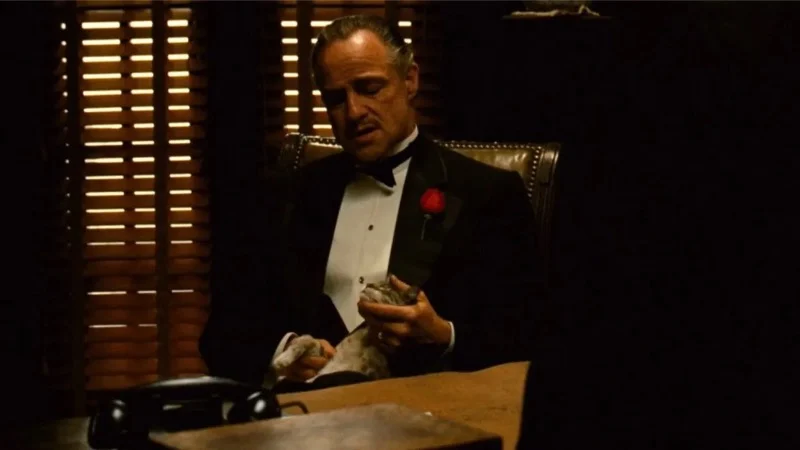
A stray cat, discovered on the film set, was given to Marlon Brando right before filming began. Without any direction, the cat calmly sat on his lap and began to purr loudly, which unexpectedly made the introduction of his character more gentle while still maintaining a sense of suspense. The purring was so loud that it covered up some of the dialogue, so the crew later had to re-record portions of Brando’s lines in post-production to ensure clear audio.
That small decision significantly impacted how the scene unfolded. The pet gave Brando’s hands something natural to do and highlighted the tension in the room. It also required the camera and sound teams to be flexible, as they hadn’t anticipated a live animal being present when they initially set up the shot that morning.
Brando used a custom mouthpiece, not cotton, to shape Vito’s voice
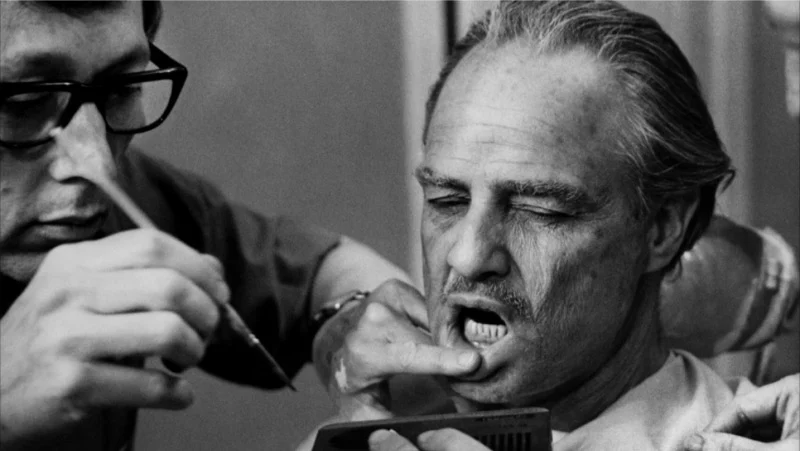
During his audition, Brando famously put cotton in his cheeks to help him visualize Vito Corleone as a bulldog. After being cast, a custom-made dental piece was created. This allowed him to speak clearly while maintaining the same bulldog-like appearance. The device pushed his cheeks out and lowered his jaw, which ultimately helped develop the character’s unique voice and imposing presence.
The device helped him maintain a consistent performance throughout lengthy shooting schedules. Both the makeup and sound departments coordinated their work around it to ensure that his lip sync and speech remained consistent between each scene setup. Importantly, the piece also enabled Brando to take breaks and rest his jaw without disrupting the film’s continuity. This was a significant benefit on set, allowing for both comfort and a streamlined workflow. Maintaining continuity was key, and this tool facilitated that.
The horse head in the bed was real and came from a rendering plant
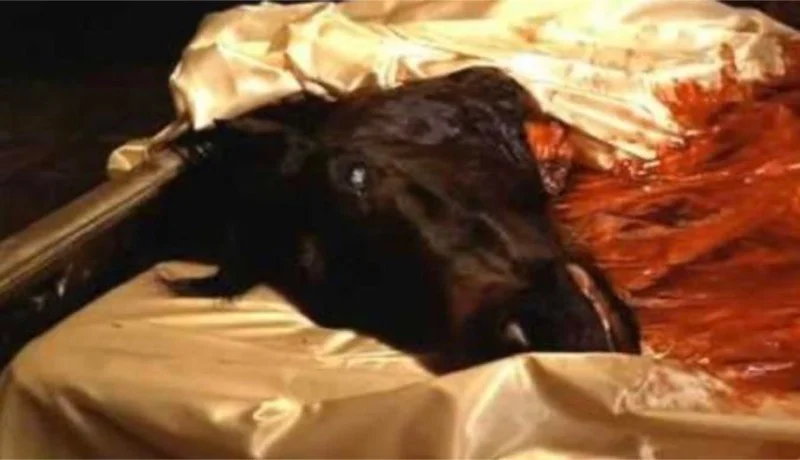
For the production, a real horse head was obtained from a company that supplies animal byproducts from slaughterhouses. The props team then thoroughly cleaned and prepared the head for filming. They worked with the set designers to carefully conceal it under the sheets, ensuring it would be visible and impactful when revealed on camera.
To get genuine responses from the actors, the film crew positioned the head prop just before each take and maintained strict control over the set. The realistic effect depended on makeup blood, precise positioning, and fast adjustments between takes, because the prop couldn’t withstand the heat of the lights for very long. The scene’s impact came from clever physical setup and not from special camera techniques.
Oranges appear repeatedly before moments of danger
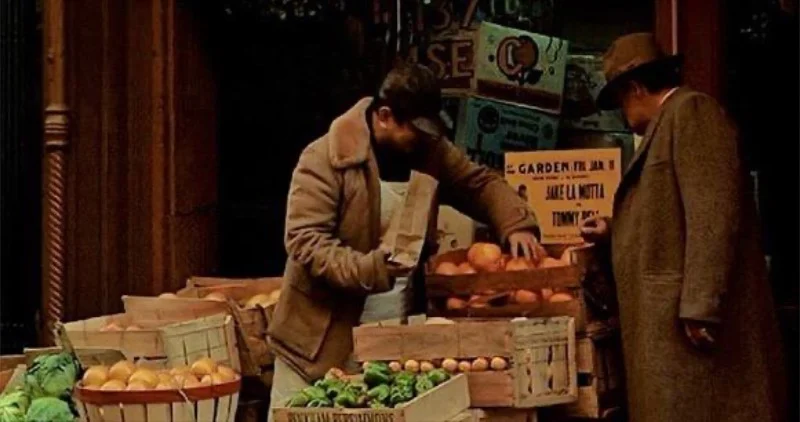
Throughout the film, oranges appear just before important moments. You can spot them at the market during the attempt on Vito’s life, placed on the table during stressful meetings, and even held by Vito in the garden towards the end. The fruit’s vibrant color naturally catches your attention and subtly connects different parts of the story.
The repeated appearance of oranges happened because of how the set was decorated and careful planning to maintain consistency. After the crew noticed this pattern while filming, the art department continued to strategically place oranges in noticeable spots, but without drawing attention away from the performers. This creates a quiet visual element that viewers can follow throughout the film.
Nino Rota’s original score nomination was revoked for prior reuse
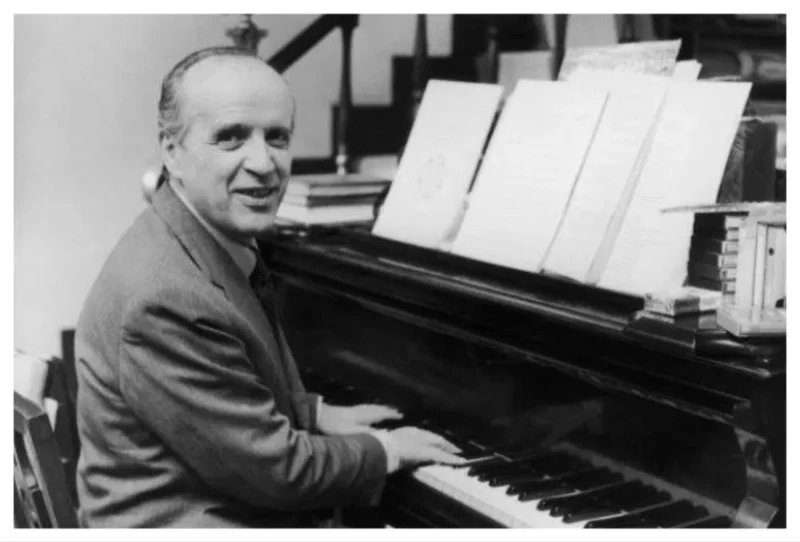
Composer Nino Rota was originally up for an Academy Award for Best Original Score for The Godfather. However, the Academy realized that a significant melody had previously been used in his work on Fortunella, breaking the rules regarding original compositions at that time. After a review confirmed this reuse of music, the nomination was taken back.
When I revisited ‘The Godfather Part II’, Nino Rota brought fresh music, and it rightfully earned him an award. This score became a real turning point for how the Academy considers music that builds on a composer’s earlier work. It really highlighted something fascinating: a melody can become instantly recognizable and beloved, even if it initially appeared somewhere else. It’s a great example of how music can transcend a single film, and the Academy’s handling of it set a bit of a precedent for future scores.
Gordon Willis pushed low light photography to new places
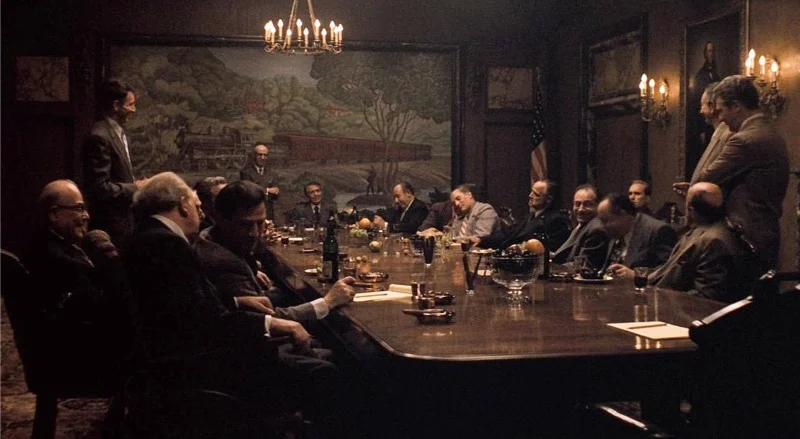
As a huge fan of the film’s visuals, I’ve always been struck by how Gordon Willis lit everything. He really favored strong overhead lights and let deep shadows do a lot of the work, which perfectly fit the story’s feeling. He was careful not to overexpose the film, and he made sure the bright parts weren’t blown out – this meant faces were often partially hidden in shadow, but the backgrounds looked amazing and full of detail. Apparently, some studio executives were nervous that the scenes were *too* dark for audiences, but the director and Willis stuck to their guns, and that distinctive look became a defining feature of the whole film. It’s so iconic!
Achieving that visual style required close teamwork with the lab and camera crews. The team carefully monitored light intensity and experimented with different film stocks to make sure skin tones remained clear and detailed. Since the sets were designed with darkness in mind, the art and costume departments chose fabrics and materials that would be visible even in the shadows and low-light areas of the frame. Further details are available on the production blog.
Al Pacino nearly lost the role during early shooting
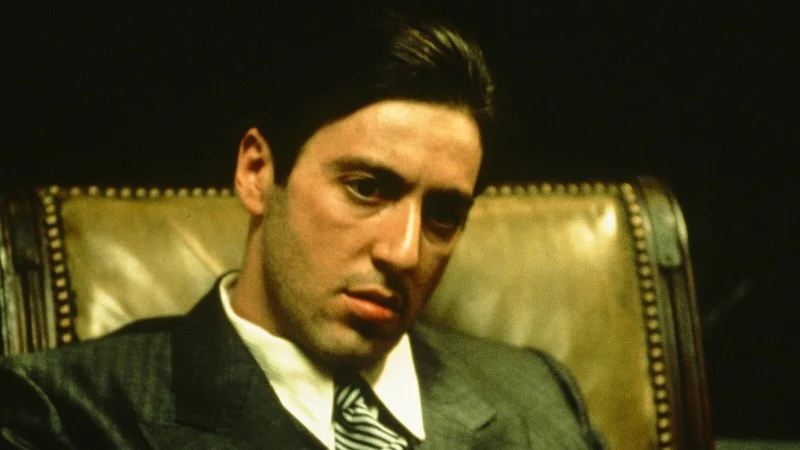
In the early stages of filming, Paramount executives were worried about the initial footage and even thought about recasting Al Pacino. His performance hadn’t yet shown the character’s eventual development, making the scenes seem subtle when viewed separately. Francis Ford Coppola believed the character’s journey needed room to unfold and requested a reshoot of the restaurant scene to demonstrate that Pacino was the right choice.
Once the restaurant scene was shot and reviewed, there was a shift in how people felt. The slow tension, getting the item from the bathroom, and the careful departure showed those in charge that Al Pacino’s interpretation of the role would be successful. The filming schedule was then organized around the most important moments for Michael’s character, ensuring his development remained understandable and consistent.
The script avoided saying the words Mafia and Cosa Nostra
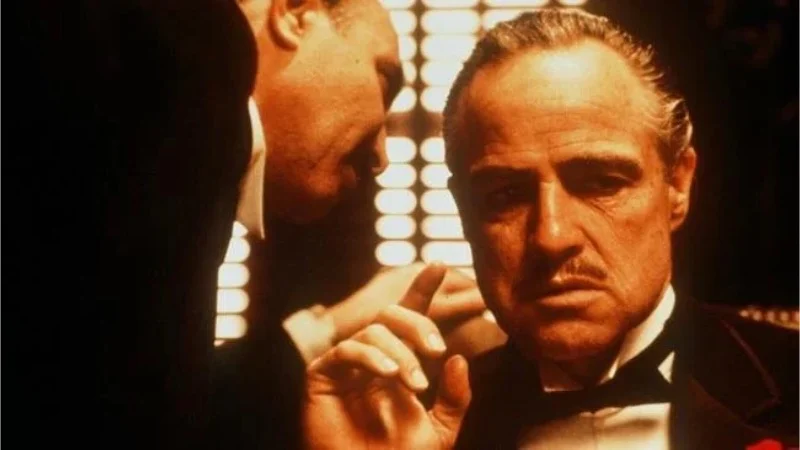
As a film enthusiast, I learned that during the early stages of making this movie, community groups actually had some great input. They spoke with the producers and asked for some changes to the script’s language. The final version ended up toning down direct mentions of the Mafia and Cosa Nostra. It was clever, really – instead of focusing on those terms, they shifted the focus to family names and the businesses these characters operated. The core story remained the same, but the dialogue and even what appeared on signs were adjusted to reflect the agreement they reached. It’s interesting to see how collaborative filmmaking can subtly change a narrative!
Let me tell you, revisiting those scenes meant a lot more than just changing a few lines. We had to go back and update everything on set – the props, the background details – to reflect the new direction we were taking. It wasn’t just a creative tweak, either. The legal and publicity teams had to carefully review all the marketing materials to ensure the messaging stayed consistent. The really clever part? They managed to change *how* the characters talk about their world, giving it a fresh feel, all without touching the core plot. It’s a subtle shift, but it makes a big difference. It really does.
The tollbooth ambush used a record number of squibs for its time
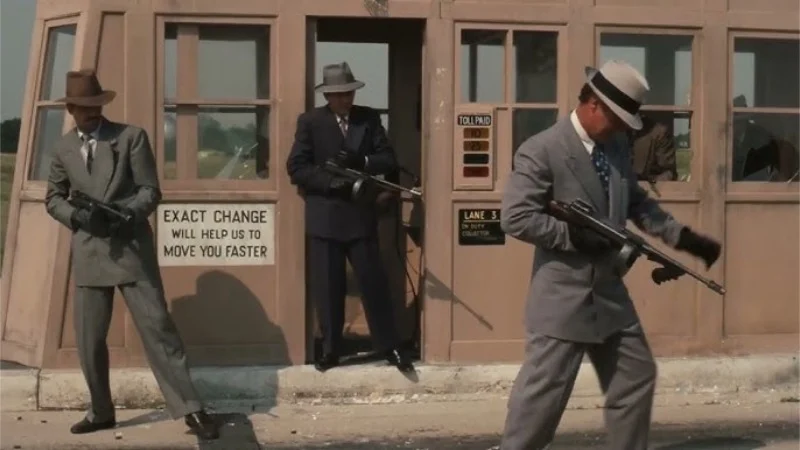
To create the dramatic tollbooth attack scene, the team carefully covered James Caan with numerous small explosive devices and blood packs. They used multiple cameras simultaneously to film the entire event in one take, avoiding the need to repeat the most intense moments. The stunt team meticulously planned the timing of the explosions – down to fractions of a second – to make it look chaotic while ensuring everyone’s safety.
The car, costume, and props were intentionally made fragile so they would break apart at the right moment. Special effects technicians connected wires to the booth and nearby barriers, and then timed everything to match the actor’s actions. Since it took a considerable amount of time to rebuild the setup after each attempt, the crew practiced repeatedly to ensure they captured the perfect shot. This careful preparation was essential for a smooth performance.
The Sicilian locations were Savoca and Forza d’Agrò, not the town of Corleone
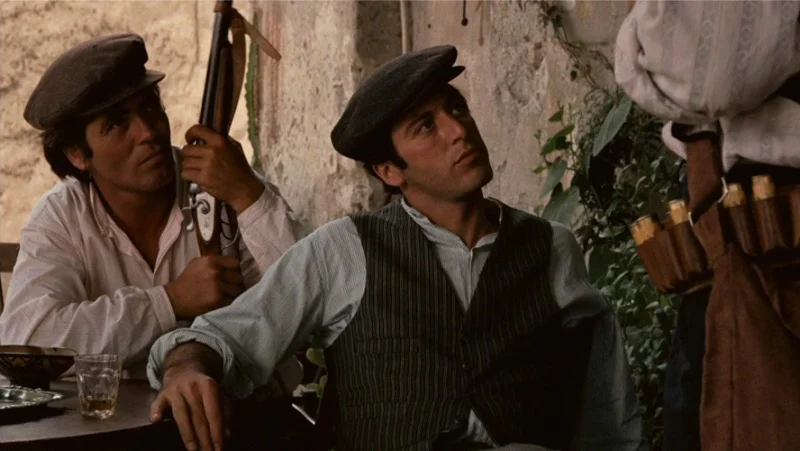
During location scouting in Sicily, the actual town of Corleone had changed too much to fit the film’s historical period. The filmmakers chose Savoca and Forza d’Agrò because their cobblestone streets, scenic hillside locations, and well-preserved buildings accurately reflected the time the story was set in. Bar Vitelli in Savoca became a famous filming location and continues to operate under that name today.
People living in the area participated as extras and assisted with practical matters, such as allowing filming in their courtyards and on country roads. The film crew collaborated with local government offices to control traffic and safeguard historical buildings while shooting. These decisions resulted in the Sicily scenes feeling authentic and different from the scenes set in New York.
Tell us your favorite little-known fact about ‘The Godfather’ in the comments below. Also, let us know which story from behind the scenes you found the most surprising.
Read More
- Bitcoin’s Ballet: Will the Bull Pirouette or Stumble? 💃🐂
- Can the Stock Market Defy Logic and Achieve a Third Consecutive 20% Gain?
- Dogecoin’s Big Yawn: Musk’s X Money Launch Leaves Market Unimpressed 🐕💸
- Deepfake Drama Alert: Crypto’s New Nemesis Is Your AI Twin! 🧠💸
- LINK’s Tumble: A Tale of Woe, Wraiths, and Wrapped Assets 🌉💸
- SentinelOne’s Sisyphean Siege: A Study in Cybersecurity Hubris
- Binance’s $5M Bounty: Snitch or Be Scammed! 😈💰
- Ethereum’s $140M Buy: Will It Save Us? 😱
- ADA: 20% Drop or 50% Rally? 🚀💸 #CryptoCrisisComedy
- Unbelievable News: Brazil’s B3 Stock Exchange to Unveil a Stablecoin Next Year!
2025-09-30 19:21